Bee Hanlon: From Veteran to Veterinarian
World War II gave many American women a taste of a new independence as they took on men's roles working in factories and defense plants, and joined the military. After the war, many were relegated back to "women's work" as male veterans returned to civilian life and were given hiring preference in the workplace. Not all women relished the idea of heading back to the kitchen. Griselda "Bee" Hanlon, who served in the Navy WAVES during the war, was determined to become a veterinarian, then a male-dominated career field. One of the first two women to graduate from the University of Minnesota's new College of Veterinary Medicine, Bee went on to become the first Board Certified female veterinary radiologist in the American College of Veterinary Radiology (ACVR) and in the State of Minnesota. She was also the first woman veterinarian to join the Veterinary School faculty after graduating in 1952. She shared her story in a 2008 oral history interview with historian Linda Cameron.
Excerpts from Oral History
LC: You mentioned that you visited a zoo [while stationed] in California [during the war], and that influenced you a little bit toward a veterinary career.
BH: Yes. It was while I was at the Naval Hospital and assigned to the epidemology unit. On one assignment we took an insecticide to the Balboa Park Zoo. It was here I met a lady M.D. who was replacing the veterinarian at the zoo hospital. At the time, she was standing on a box doing an autopsy on a gorilla. This fascinated me. I later had the opportunity to talk with her and find out a bit more about veterinary medicine. This seemed to plant a seed that surfaced later when my husband and I moved to Minnesota, his home state, and where he wanted to enroll in pre-medical school. It was here that I learned about veterans who were meeting with the legislature for a veterinary school. I also learned at this time that should I apply for enrollment, I would need some pre-veterinary courses in livestock.
LC: You were born and raised in Montana. You came to Minnesota in 1947?
BH: I think it was in the fall of 1946. I worked part time as a typist in the Rural Sociology Department and was also able to take my required livestock courses to make me eligible for veterinary school.
LC: You applied for veterinary college in 1948?
BH: Yes, it was the fall of 1948 and the second year for the new school, but I was turned down when I first applied. ...They said that they weren't allowing women into the school that year.
LC: How did you break that barrier?
BH: I wish I could take credit for how that was resolved, but unknown to me, another woman was applying at the same time and also was rejected. JoAnne Schmidt was working for a lady who owned a collie kennel in Minneapolis who happened to be an alumnus of the University. When she found out that JoAnne would not be admitted to what she called "her university" she wasted no time in gathering the support of lady friends who sent letters to the president and other university officials and alumni protesting the action of the university, and requesting a change in their position. This action was successful and, as a result, two chairs were added to the class of forty-eight men to make it a total of fifty students in the second class of the new school. ...We often countered by saying that we didn't "replace two men" because we were an "addition".
I am sorry to have missed out on all the excitement, but I was in Montana at the time I received my letter of rejection. JoAnne, who I met on the first day of class, told me all about what happened that summer. I can't help but smile when I think of the power of determined women.
LC: Had you met any lady veterinarians?
BH: No. I didn't know any women veterinarians at that time. After I graduated I heard there were two lady vets at the veterinary school in Michigan and one in Iowa. There was also one lady vet from Canada who was licensed to practice in Minnesota with her husband before I became licensed in 1952.
LC: Did you take advantage of the G.I. Bill to finance your education?
BH: I couldn't imagine not taking advantage of a free education. [Without it,] I don't think I would have been a veterinarian. My life would have been entirely different. ...The situation of my being in the WAVES and a veteran may have helped me to be admitted into the profession. The students who were veterans had worked hard at the legislature to get a Veterinary School established in the state.
LC: Was JoAnne Schmidt [O'Brien], the other female student, a veteran, as well?
BH: No, she was not a veteran. She had most of her pre-veterinary courses in Illinois prior to making application in Minnesota.
LC: You mentioned that you were well received on campus when you were finally allowed into the College. How did the male students react to having women in class?
BH: I can't say there was much of a reaction. We were all adults. The class was made up largely of veterans. There were some snickers and smiles, even from the professors, when we had to put on coveralls that were made for large men and shoulder-length rubber gloves to palpate dairy cows for pregnancy. This amused us, as well, but women weren't expected to be enrolled so there were no special accommodations for us.
I remember a classmate telling us, Joanne and I, that he was glad there were a couple of gals in class as it helped to keep the language a bit cleaner. I believe they were careful when we were within hearing distance. Veterinary medicine in those days was mostly about farm and food animals and was no place for women. We heard about this mainly outside of the classroom - and from women, as well.
LC: What was the faculty's response to having women in class? Were they supportive?
BH: Yes, I would say so. We received the same treatment as the men students. They were helpful to all of us. I am sure there were stories of our performance that circulated among the faculty. I'll tell you a funny story, about which I am still teased...This is an amusing story that happened on a day that my classmate [JoAnne] was absent and I was sitting behind a tall person at the parasitology lecture and not immediately visible to Dr. Griffiths, one of our more formal teachers. He began our lecture by saying, "I corrected the spot quiz you gentlemen took last period and caught quite a few of you with your pants down. I wonder how I caught the women." There was an explosion of laughter and then he happened to see me. I had never seen anyone so embarrassed. His face turned very red and he turned his back to the class with his hands and head on the blackboard. The laughter continued for quite a while. I found it amusing, too. He then made a public apology and continued with the lecture. He apologized to me again after the lecture and as I was leaving the room. This story quickly made the rounds in the school. Dr. Griffiths remained a good friend throughout my years at the U.
LC: Did any of the men in the class ahead of you serve as mentors for you?
BH: Oh, yes. In my junior year, we were assigned to a senior student, and they were called "big brothers", to give us support and help with questions we might have. Glen Nelson was my big brother.
LC: I know there was a Pre-Vet Club, but was there a veterinary student organization when you were a student?
BH: Yes, they were just beginning to organize the Junior Chapter of the American Veterinary Medical Association (AVMA) when I was a Junior. I wasn't aware of the Pre-Vet Club, but I did join the Juinor Chapter when I was in Vet School. I believe we all were members of the Junior Chapter.
LC: Was there a Minnesota Veterinary Association at that time?
BH: Yes. It was established in 1897, according to Dr. Arnold's Book, One Hundred Years of Progress: The History of Veterinary Medicine in Minnesota. The students were expected to attend the meetings and were excused from class to do so. Registration was free for the students.
LC: What kind of practical experiences did the students gain while they were in school?
BH: In our basic years we had embalmed animals on which we studied anatomy. The formaldehyde in the labs was very strong. It took some time to become accustomed to working there. It was very hard on eyes and I often wondered how it affected our lungs.
Then, in our third and fourth years, we were in clinics and were divided into teams and rotated through outpatients, medicine and surgery areas in both large and small animal. We were also assigned to accompany a veterinarian on field trips to dairy and beef farms. We also rotated through autopsy in the diagnostic lab and the laboratories for practical experience in these areas. So there were two years of practical exposure, working on live animals. It is different today and students are able to have exposure in more specific areas of their interest.
During my senior year, the school also purchased a practice near Maple Plain, Minnesota where the men students resided for a week to get even more practical experience with large animals that would be brought in for various problems. They did not have accommodations for women, so JoAnne and I were excused from this rotation. This service was closed a few years after because of city expansion plans.
LC: Did you ever feel discouraged, having to deal with large animals?
BH: On the contrary; I enjoyed it very much. I had horses when I lived at home and some experience with dairy cows and smaller farm animals. in most cases, men as well as women will need an extra hand for assistance with large animals. I also learned in the Navy, if you don't have something that is needed, you invent it. I do think women are especially good at this, and at inventing alternative methods when needed.
LC: How long did it take you to complete the degree?
BH: It took four years for the professional DVM degree.
LC: When you finished your training as a veterinarian, were you expected to serve an internship with a practicing vet, or did you have the freedom to go off and begin your career?
BH: Once we had the DVM degree and a state license, we could begin our own veterinary practice. Most graduates at that time preferred to practice with another veterinarian for a time before starting their own hospital. I chose to remain at the school when offered a research fellowship and to work toward a Master's Degree. I learned later that the school preferred to train their own students for future faculty positions.
My Master's Degree was with a major in Veterinary Medicine and a minor in Bacteriology. It was after the Master's Degree that I began my study in Veterinary Radiology. With additional graduate courses at the Medical School and Veterinary School I was sufficiently prepared to take and pass the Board Examination to become Certified as a Diplomate in the College of Veterinary Radiology. I also have the distinct honor of being the first woman to hold this certification.
LC: What interested you most about Radiology?
BH: I think it was the problem-solving, and the science and art involved. Getting a diganostic image, in many cases, solved the problem here and now. in many other cases it wasn't as specific, but challenging, and further views or special procedures could offer a solution. It was an area that needed developing and better teaching.
LC: Did you develop some of the courses that you taught?
BH: Yes, I modified and further developed the basic radiology course. Study films were added to the laboratory sessions. I also developed graduate courses in large and small animal bone diseases and horse lamenesses, and in Special Radiographic Procedures. Radiology later was being integrated with other graduate courses in Cardiology, Physiology, and with an undergraduate course in Normal Anatomy.
LC: Did you think when you started Veterinary College that you would end up as a professor?
BH: Never. First I thought I would go into practice, probably back in Montana, but it became more likely as I continued with my graduate work that I would remain in academia and teach. I slowly advanced up the ranks from Instructor to Associate Professor, and didn't think I would make the rank of Full Professor at that time because I was somewhat deficient in the number of publications. But all told, the Committee's vote was positive and, in 1973, I made Full Professor.
LC: How long was your teaching career?
BH: Thirty-three years.
LC: Bee, tell me what aspect of your work at the University of Minnesota you enjoyed the most.
BH: I think my time spent with students during the morning hours in clinics. It was here I got to know the students who rotated through radiology for a week at a time. ...The diagnostic films were interpreted and we discussed the findings and what further studies, if any, would help to solve the problem.
LC: What do you feel is your greatest contribution to teaching at the University?
BH: I would like to think that it is in introducing and explaining to students the use of yet another diagnostic and therapeutic method that can be exceedingly helpful in their professional years as veterinarians. I hope I have left a mark with the students I had in my radiology courses and in clinics.
Read the full transcript.
[Editor's note: Dr. Hanlon has devoted much of her career to the study of canine hip displaysia. She has been honored for her work with a plaque of appreciation from the faculty, staff and students of the University of Minnesota Veterinary Teaching Hospital and has received recognition from the Asssociation for Women in Science. She was given the Minnesota Veterinary Medical Association's (MVMA) Distinguished Service Award in 1993. In 2006 she was one of three veterinarians named by the MVMA as "Minnesota Veterinarian of the Year" for her efforts in helping to establish the Veterinary Historical Museum on the University's St. Paul campus.]
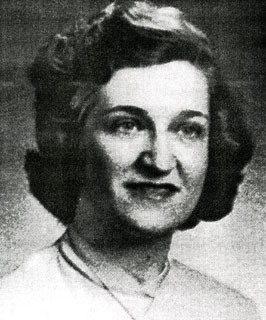

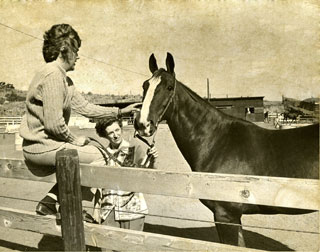
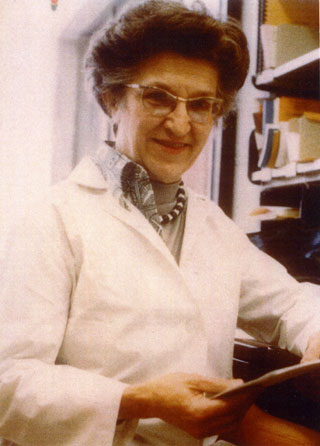
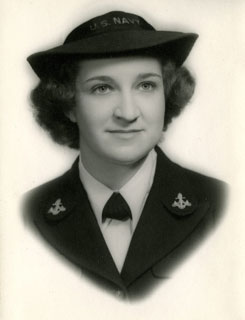

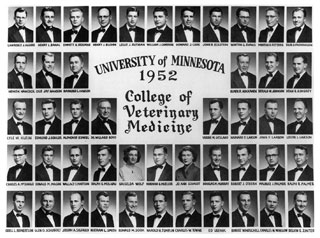
Source
Nelson, Glen; Linda Cameron, Editor, Glen H. Nelson: Give Us A Veterinary College! Minnesota Historical Society: In Their Words: Stories of Minnesota's Greatest Generation, 2008.
Arnold, John P., One Hundred Years of Progress: The History of Veterinary Medicine in Minnesota. St. Paul: Minnesota Veterinary Historical Museum, 1994.


